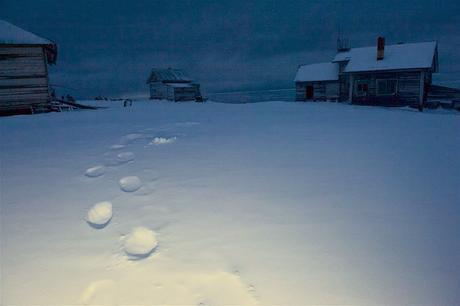 An international team of explorers has embarked on an expedition into the Arctic to go in search of a set of almost-mythical islands located north of Siberia. The team hopes to not only fill in some blank spots on the map regarding this seldom visited place, but will also examine the impact of climate change on the environment north of the Arctic Circle.
An international team of explorers has embarked on an expedition into the Arctic to go in search of a set of almost-mythical islands located north of Siberia. The team hopes to not only fill in some blank spots on the map regarding this seldom visited place, but will also examine the impact of climate change on the environment north of the Arctic Circle.The Pax Arctica Expedition was created to not only create awareness of threats to the Arctic but also to help usher in new ecological regulations governing that part of the world. To that end, a squad of French, Russian, and American explorers and researchers have begun sailing north through the treacherous Arctic Ocean in an attempt to reach New Siberia and the De Long Islands, which are generally only accessible in the late summer and early fall, prior to the arrival of the ice pack.
The team consists of expedition leader Luc Hardy, who is joined by a well-rounded research team that features the likes of paleozoologist Alexei Tikhonov and the anthropobiologist Eric Crubezy. They are being guided by veteran polar explorer Victor Boyarsky, who has had numerous expeditions into the cold places of our planet, including Antarctica and Greenland.
The group set out aboard a 437-ft. Russian Arctic research vessel called the Mikhail Somov from the port city of Tiksi a few days back. The ship will make a few stops en route to New Siberia and De Long, delivering meteorologists to remote weather stations throughout the area, and resupplying others. Those stations will generally be cut off from the outside for months at a time due to the arrival of winter, so the Somov is their lifeline.
The ship reached remote Henrietta Island yesterday, which is part of the De Long island chain. They found very little indication that it had ever been visited by man in the past, although polar bear tracks were discovered in the snow. It is likely that as they proceed north, they'll encounter more of those creatures, and yet fewer signs of man.
Ultimately the team hopes to reach their main objective, which is New Siberia. Relatively low-lying in terms of altitude, the island is covered in vegetation hardy enough to survive in the tundra. The place is renowned for having preserved mammoth bones and tusks, as well as other megafauna, in it permafrost, but it also serves as a good indicator of a place that could be deeply impacted by climate change.
You can follow the progress of the expedition via its blog, Facebook page, and live tracker.

